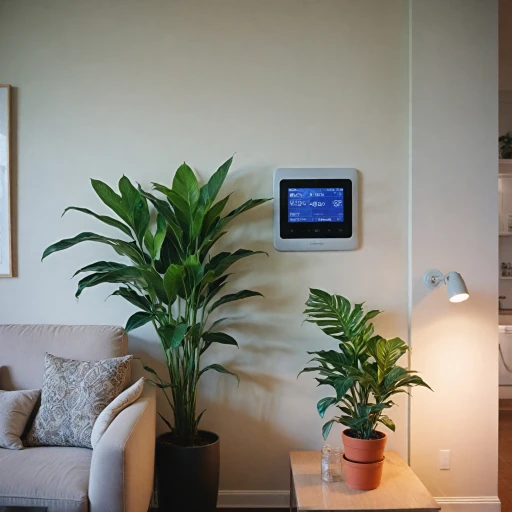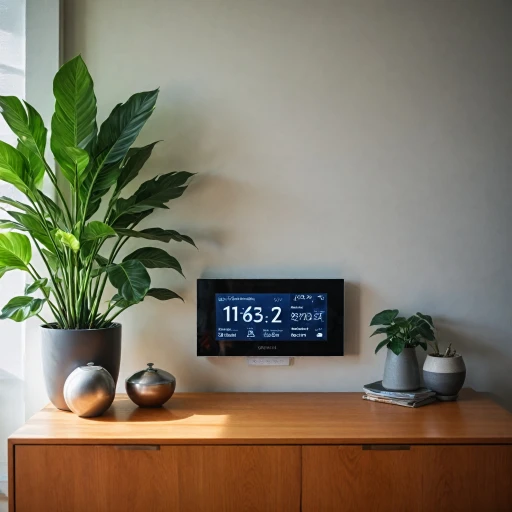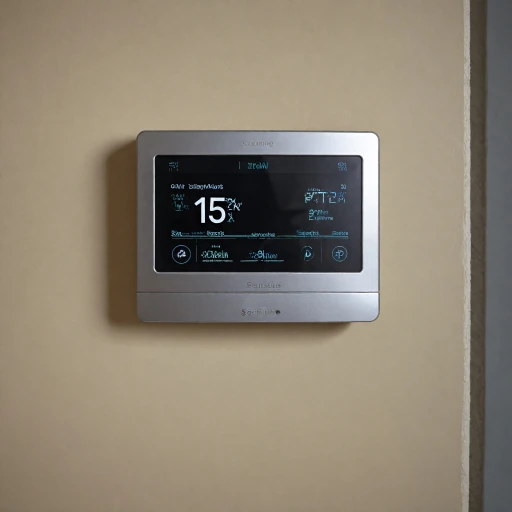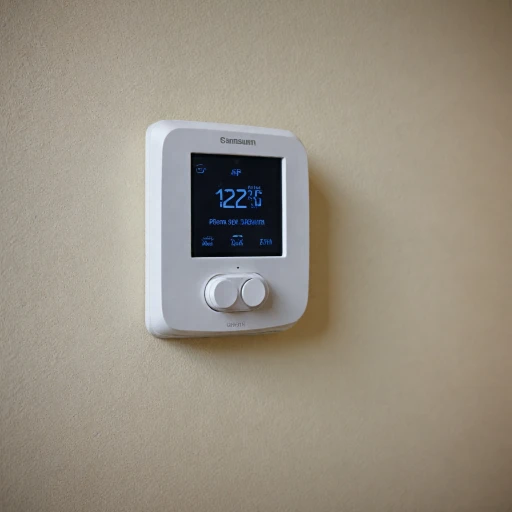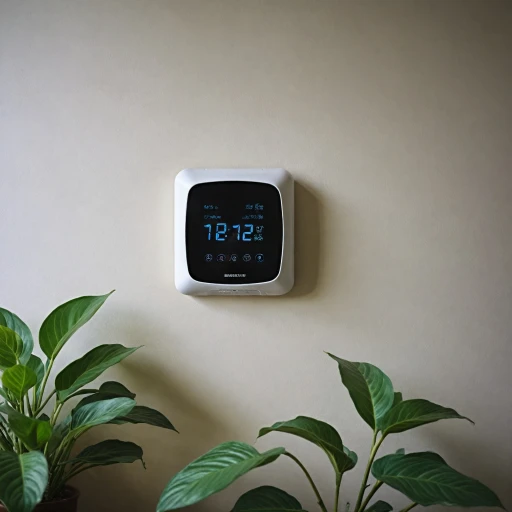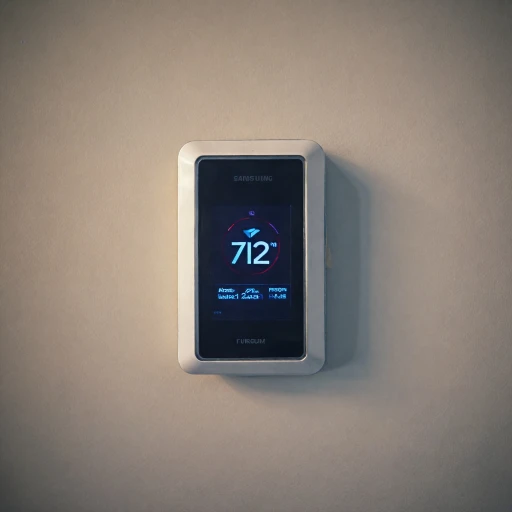Understanding the Click: What It Means
Decoding the Mysterious Clicking Sound
Experiencing a clicking noise from your thermostat can be confusing and a bit unnerving. But rest assured, understanding the sound and its implications is an essential first step. When your thermostat clicks, it's a signal that the system is preparing to turn on the air conditioning or heating. It’s a normal sound you typically hear when the control board is signaling a change in temperature. However, if the clicking persits but the AC stays off, the clicking noise could be indicating an underlying issue that may require attention. Often, homeowners will hear the clicking sound from smart thermostats, expecting the connected hvac system to spring to life and circulate cool air throughout the space. But sometimes, the actual operation doesn't follow, leaving the air conditioner non-responsive. In such scenarios, it’s essential to check if there’s a subsequent issue plaguing other parts of the HVAC system, like the outdoor unit or the unit's control components. This clicking noise might point towards problems with components such as the power supply, capacitor, or even the circuit breaker, affecting the entire system's operational smoothness. For smart thermostats, it's not uncommon for these sounds to also signify issues relating to thermostat settings that haven't been properly adjusted, potentially requiring some troubleshooting steps. With regular maintenance, these systems generally offer reliable service, but an occasional check-up can help prevent more significant problems down the road. If you're interested in understanding more about particular thermostat types and improving how your units operate, you might want to explore how different configurations like line voltage thermostats can play a crucial role in HVAC efficiency here. As you decode the intricacies of your smart thermostat, being informed about its function can sometimes be just as crucial as seeking professional help when needed.Common Causes of AC Inactivity
Unraveling the Silence of Your AC Unit
Your heater or air conditioner may be silent, but that doesn't mean all is well. More often than not, issues within the HVAC system aren't easy to diagnose without a good look under the hood. Here's a breakdown of common problems that may cause your thermostat clicking symptoms without the expected whoosh of cool air from the vents.- Power Supply Problems: The thermostat and HVAC system need a reliable power source to operate. You should check the circuit breaker for tripped switches or fuses that might need replacement to restore power to the unit.
- Thermostat Settings: Incorrect thermostat settings can hinder the air conditioner's function. Ensure that the thermostat is set to "cool" mode and the desired temperature is lower than the current room temperature to prompt the cooling cycle to start.
- Blown Capacitors: The capacitors in an HVAC system start essential components like the air conditioner's compressor or fan motor. A failed start capacitor will cause clicking noises, and the unit might not power on as expected.
- Control Board Issues: The control board regulates crucial system functions and can fail due to age or exposure to the elements. An off-kilter control board may generate a clicking sound without initiating the air conditioner.
- Dirty or Clogged Air Filters: Regular maintenance, such as replacing or cleaning air filters, prevents airflow obstructions. Blocked filters reduce efficiency and burden HVAC components, manifesting in clicking sounds without effective operation.
- Thermostat Malfunctions: Thermostat issues like outdated or miscalibrated units can generate misleading signals, causing the system to believe it should stay off. Replacing outdated equipment or consulting the manufacturer's manual might help resolve these hitches. Explore the significance of thermostats in troubleshooting guides, like line voltage thermostats.
Smart Thermostat Troubleshooting Tips
Troubleshoot the Clicking with Smart Thermostats
- Check Thermostat Settings: Ensure the thermostat settings are correct. Models differ, so it's worth consulting the user manual for specific instructions. If your thermostat clicks but the system doesn’t turn on, confirming the settings may reveal a simple fix.
- Inspect the Power Supply: Make sure the thermostat and the HVAC unit have adequate power. Verify that no circuit breaker has tripped. A disruption in power supply could prevent the air conditioning from functioning, even if the thermostat clicks.
- Replace Air Filters: The system might be inactive due to clogged air filters. Regular maintenance and replacement can lead to improved air flow, minimizing overload that could result in the thermostat clicking but not activating the system.
- Examine the Control Board: Faults in the control board may prevent your HVAC system from operating. While some issues can be resolved with a DIY approach, control board-related problems often require professional repair to ensure everything is joined correctly.
- Test the Capacitor: A faulty capacitor could hinder the start of your air conditioner or furnace. Testing and replacing it when necessary can address the clicking sounds without much hassle. When in doubt, schedule service with a professional to handle complex electrical issues.
Taking these steps not only helps in the immediate problem-solving but also serves as a preventive measure for future air conditioning problems. Meanwhile, smart thermostats offer additional features that optimize comfort and efficiency for baseboard heating. Visit this guide for more information on leveraging this advanced technology.
When to Call a Professional
Knowing when it's crucial to call in the experts
Even the most diligent maintenance efforts can occasionally fall short of resolving HVAC system issues. When faced with persistent problems, it's important to recognize when professional intervention becomes necessary. Here are some scenarios where you'll want to consider reaching out to an HVAC expert:- Repeated clicking noises with no clear origin: If your thermostat continues to click but fails to trigger the air conditioning or heating unit, it may indicate deeper issues with components such as the control board or capacitors.
- Power supply inconsistencies: A fluctuating or inadequate power supply can prevent the furnace or air conditioning unit from starting. An expert can conduct precise checks on the circuit breaker, wiring, and connections to ensure stable power transfer throughout the system.
- Component breakdowns: Malfunctions in key parts of the system, like the outdoor unit or air filters, might require specialized knowledge and tools for repair.
- Ineffectual thermostat settings: If adjusting your thermostat settings does not improve the situation, a professional may need to calibrate or repair the thermostat.
- Mini split system complications: These sophisticated units are cost-effective and efficient but require specific expertise for troubleshooting and repairs, particularly if clicking noises persist.
Preventive Measures for Future Issues
Proactive Care for Your HVAC System
Regular maintenance is crucial to prevent future issues with your HVAC system. Ensuring that all components work harmoniously can reduce the chances of hearing mysterious clicking noises and guarantee efficient operation.
- Regular Filter Replacement: Air filters should be checked and replaced frequently. A clogged filter can hinder airflow, causing the air conditioner to strain and possibly produce strange noises.
- Scheduling Routine Maintenance: It is wise to schedule service visits at least annually. A professional can inspect and service your air conditioning, focusing on key components like the capacitor, control board, and outdoor unit.
- Checking the Power Supply: Ensure that the power supply to your system is stable. An interrupted or weak supply can cause the thermostat to click without turning on the unit.
- Inspecting the HVAC System: Regularly check the outdoor unit and mini split systems for any blockages or dirt. Keeping these clean will enhance air flow and unit efficiency.
- Listening for Clicking Sounds: If the thermostat clicks regularly without the AC starting, it might indicate underlying issues. Promptly addressing these can prevent more severe problems.
Staying ahead with these preventive measures will ensure that your HVAC system remains efficient, preventing the inconvenience of sudden malfunctions. Consistent upkeep aids in prolonging the lifespan of your system while enhancing comfort through every season.
The Role of Smart Technology in HVAC Systems
The Significance of Intelligent Integration in HVAC Systems
Smart technology has revolutionized the way we manage and monitor our home environments. When your thermostat clicks but the air conditioning doesn’t activate, it might highlight the unmatched precision of smart thermostats in detecting issues within the HVAC system. Smart thermostats do more than turn on an air conditioner or furnace. They are continuously collecting data on your home’s climate preferences and HVAC system performance. They can monitor power levels, analyze air flow, and even predict potential problems before they occur. These advanced devices often include:- Real-time monitoring and alerts: Seamlessly, smart thermostats provide real-time notifications about system anomalies such as clicking noises, potential capacitor failures, or outdoor unit disruptions. This rapid insight allows homeowners to schedule service before small issues escalate into larger problems.
- Energy-efficient controls: Modern thermostats optimize energy usage, ensuring that your air conditioning or heating unit functions efficiently and effectively. By adjusting to your lifestyle and environmental conditions, they minimize unnecessary power consumption while maximizing cool air output when needed.
- Remote access and control: Whether you're at home or away, smart thermostats offer the ability to adjust settings remotely. This is particularly beneficial when unexpected clicking noises arise and you need to modify thermostat settings immediately.
- Self-diagnostic capabilities: Smart thermostats are designed to diagnose problems like misaligned circuit breaker connections or compromised air filters. They can directly inform you about the necessary maintenance or repairs needed to address specific issues.

